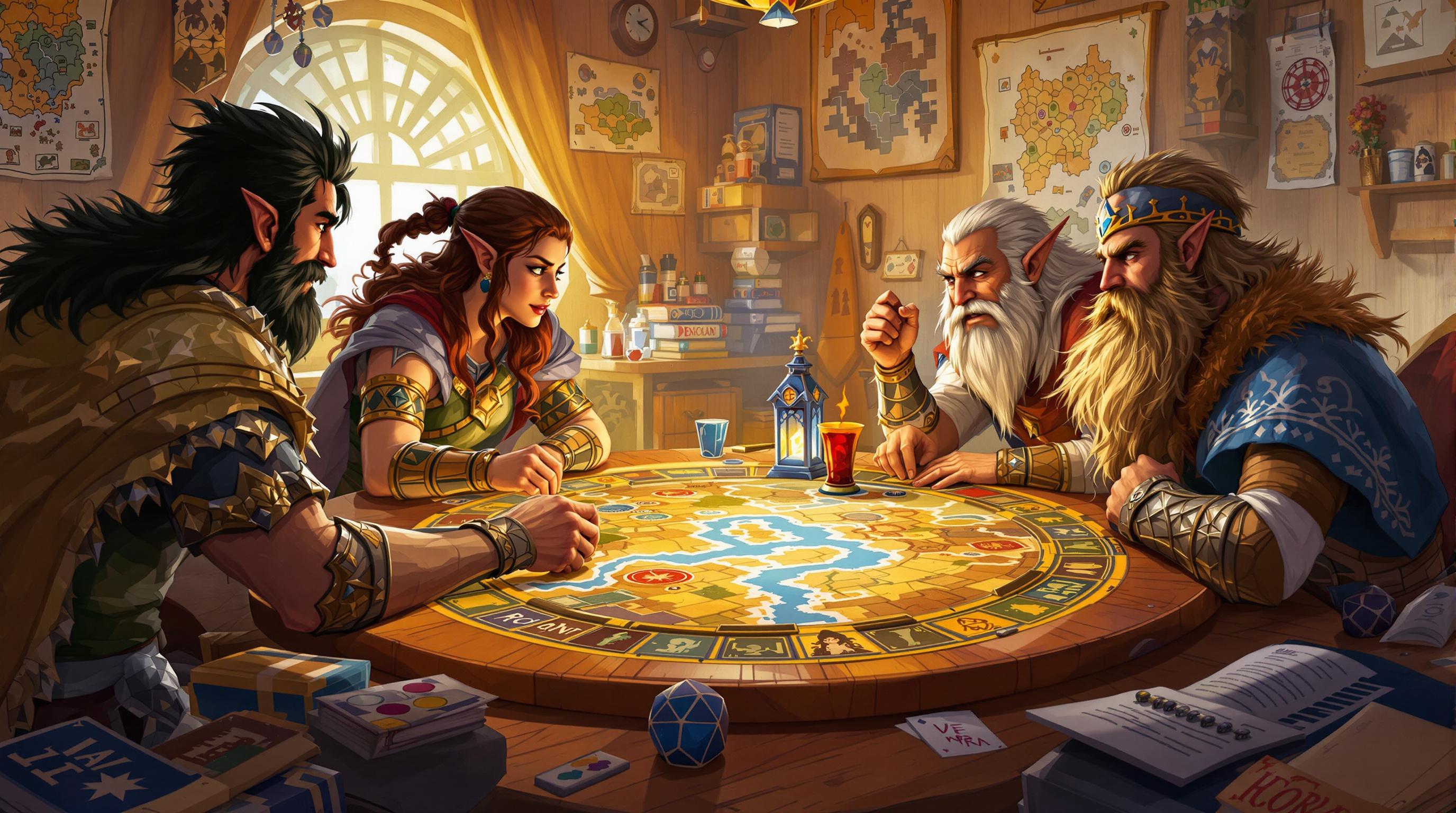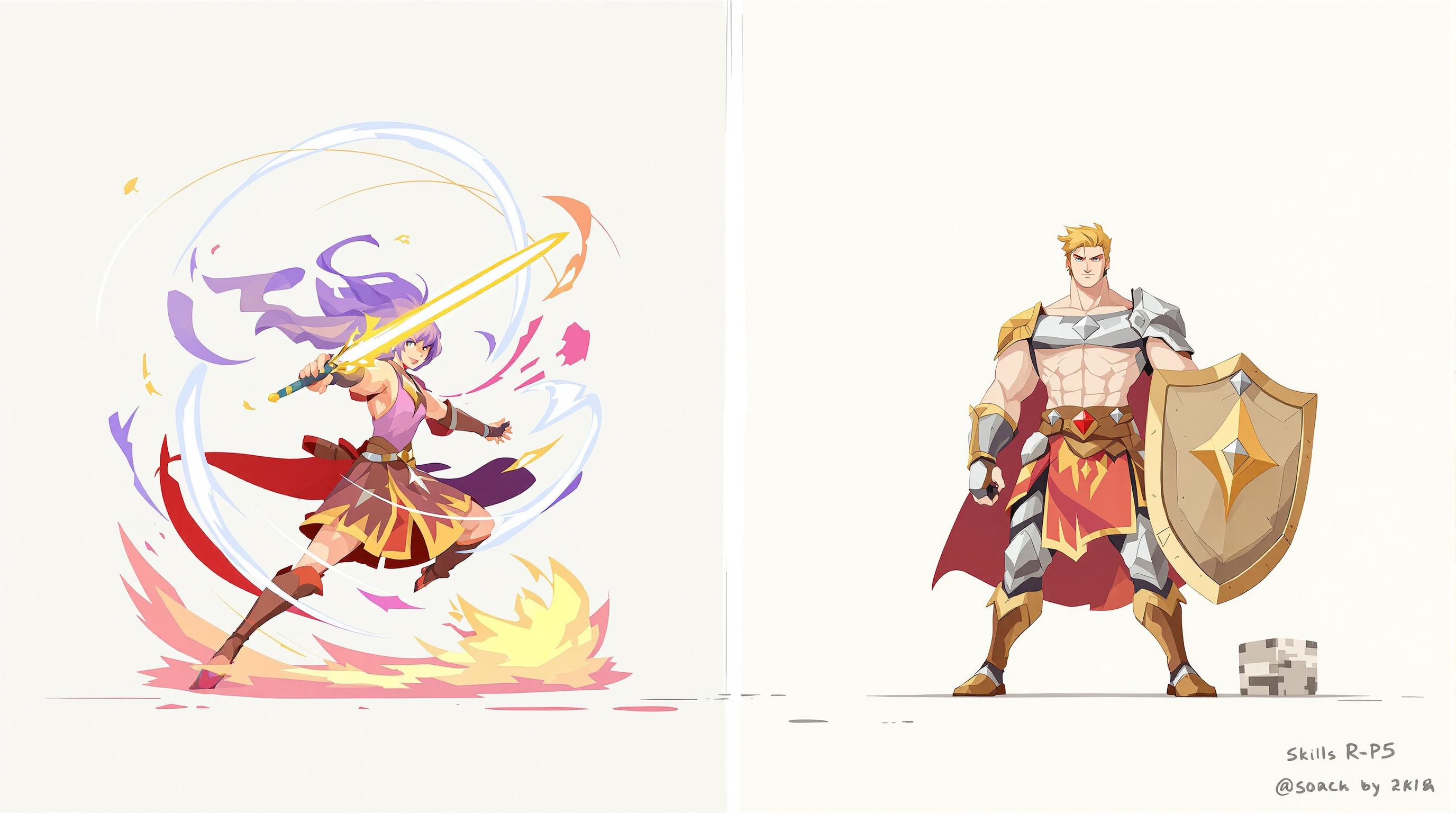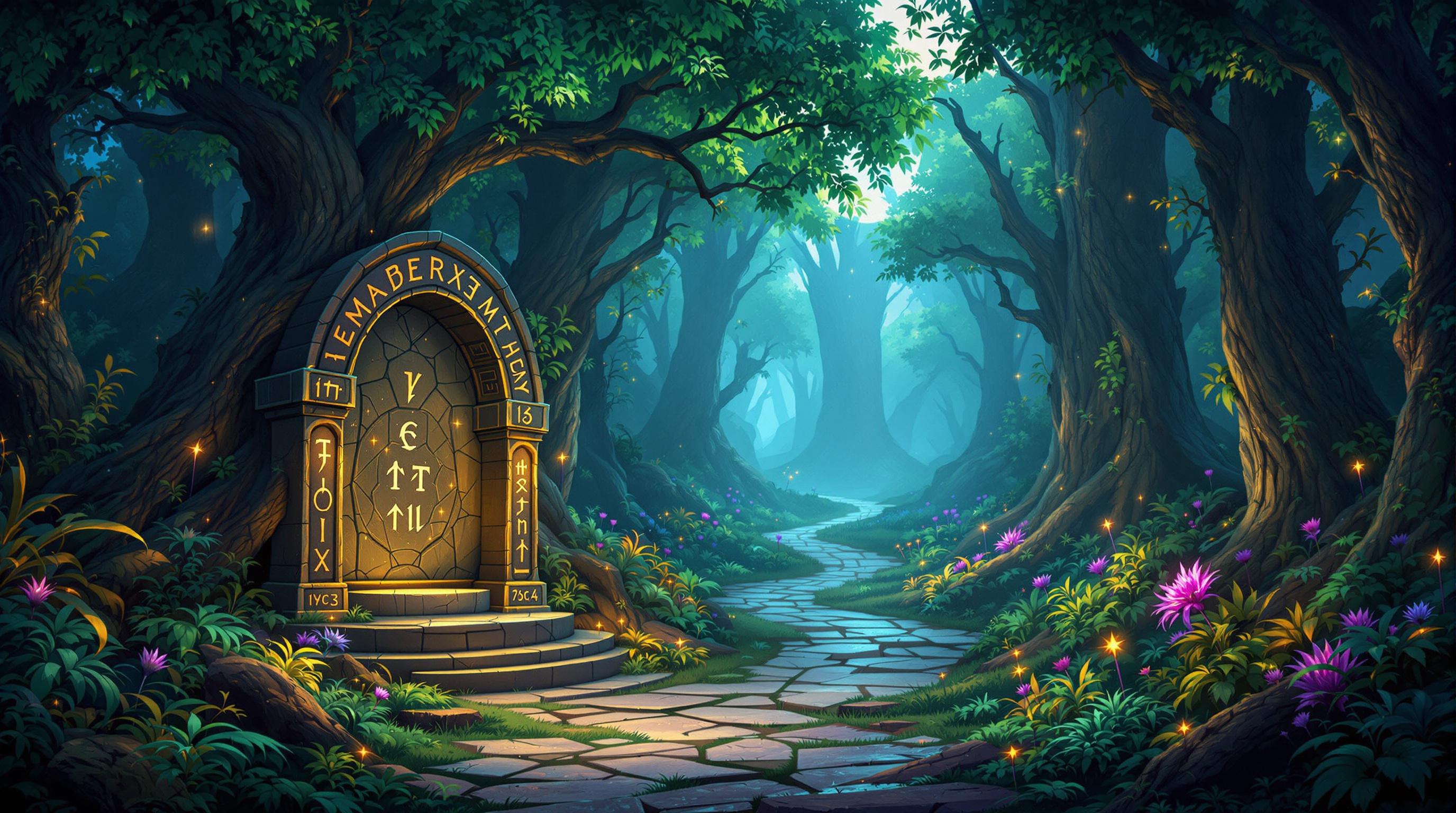Classless tabletop RPGs are changing how players create and develop characters. Instead of predefined roles like "warrior" or "mage", these systems let you fully customize your character through skills, traits, and abilities. Popular systems like GURPS and FATE offer unmatched flexibility for storytelling and gameplay. Here’s why they stand out:
- Character Creation: Build unique characters with point-buy systems, mixing any skills or traits.
- Gameplay: Progression is skill-based, evolving naturally through actions and story events.
- Storytelling: Supports unconventional characters and creative problem-solving.
| Feature | Class-Based Systems | Classless Systems |
|---|---|---|
| Learning Curve | Easier, predefined roles | More effort to learn |
| Character Creation | Quick, fixed templates | Time-intensive, flexible |
| Gameplay Depth | Structured progression | Open-ended development |
| Balance | Built-in via class limits | Requires GM oversight |
| Storytelling | Clear archetypes | Nuanced, layered characters |
Classless systems take more time to learn but reward you with deeper customization and storytelling freedom. If you want total control over your character and a dynamic gameplay experience, classless TTRPGs might be the perfect fit.
Key Features of Classless RPG Systems
How Character Creation Works
Classless RPG systems often rely on a point-buy method, where players distribute points across attributes, skills, and abilities to craft their characters. For example, GURPS gives players the freedom to design unconventional characters, such as a sword-wielding detective or a scholarly warrior-diplomat. Unlike class-based systems that lock players into predefined roles, this approach allows for total customization, letting players create characters that break traditional molds.
To keep things fair, game masters may introduce limits like skill caps or attribute restrictions. FATE, for instance, uses a pyramid structure for skills, requiring characters to have a broader base of lower-level skills before advancing to higher-level ones.
| Character Creation Element | How It Works |
|---|---|
| Point Allocation | Players assign points to attributes, skills, and abilities |
| Skill Development | Characters can learn any skill, regardless of background |
| Balance Mechanics | Caps and limits ensure no single character becomes overpowered |
| Customization Options | Traits and abilities can be freely combined |
After character creation, the flexibility of classless systems continues to enhance gameplay, focusing on organic character growth and creative problem-solving.
Gameplay Systems in Classless RPGs
In classless RPGs, progression is skill-based. Characters improve by performing actions and gaining experience, rather than following preset level advancements. For example, FATE uses aspect-based mechanics, allowing characters to grow by acquiring new abilities or evolving existing ones based on the story's events.
Combat and challenges emphasize flexibility. Instead of being restricted to class-specific actions, players can attempt any action that aligns with their character's skills. This encourages inventive problem-solving and lets characters approach situations in unique ways.
Modern systems like FATE and GURPS are highly adaptable, fitting a wide range of genres and settings. Game masters can tweak skill lists and mechanics to suit campaigns ranging from medieval adventures to futuristic space operas, all without overhauling the system. This flexibility makes classless RPGs ideal for campaigns that span diverse themes and settings.
These systems also support characters that defy traditional roles. For example, a character might blend negotiation skills with combat expertise or combine magical powers with technical know-how, all while maintaining balance through point costs and skill limitations. This freedom lets players explore complex, multi-faceted character concepts.
Using Classless RPGs in Your Games
Examples of Popular Classless RPGs
GURPS uses a point-buy system that lets players design characters tailored to any setting, whether it's medieval fantasy or hard science fiction. Its detailed framework appeals to those who enjoy digging into the mechanics and mastering a system's intricacies.
FATE, on the other hand, focuses more on storytelling. It uses an aspect system - short descriptive phrases that define characters - and resolves actions with Fudge dice. While GURPS is all about detailed customization, FATE leans toward simplicity and narrative-driven gameplay, catering to groups who prefer a lighter set of rules.
| System | Core Mechanic | Best For |
|---|---|---|
| GURPS | Point-buy with detailed customization | Players who enjoy mastering complex systems |
| FATE | Aspect-driven, narrative-focused | Groups prioritizing storytelling over mechanics |
Both systems highlight the adaptability of classless RPGs, but running them effectively takes thoughtful preparation.
Tips for Running Classless RPGs
Running a classless RPG comes with its own set of challenges. Start by setting clear boundaries for character creation, such as point caps or restricted abilities. This keeps the game balanced while still giving players room for creativity.
For systems like GURPS, which can feel overwhelming, try these strategies:
- Focus on skills and abilities that fit the campaign's theme. This narrows the choices and makes the system easier to learn.
- Provide templates to guide players, especially those new to the system.
When it comes to balance, pay close attention to how skills interact. Some combinations can become too powerful, so it's a good idea to set reasonable limits where necessary.
To make character progression feel meaningful, tie it directly to the story. Instead of using arbitrary point allocation, let players gain new abilities through in-game events. This approach deepens immersion and ensures growth feels earned and connected to the narrative.
Finally, design scenarios that encourage teamwork. For example, a heist could require technical, social, and combat skills, giving every character a chance to shine. This not only keeps the story engaging but also creates natural opportunities for character development.
sbb-itb-b8b00a5
Related video from YouTube
Comparing Class-Based and Classless RPG Systems
Class-based RPGs, like Dungeons & Dragons, give players defined roles through preset classes (think fighters or wizards). On the other hand, classless systems allow for open-ended character creation and development. Here's how they stack up in key areas for both players and game masters:
| Aspect | Class-Based Systems | Classless Systems |
|---|---|---|
| Learning Curve | Easier to pick up with predefined roles | Requires more effort to learn initially |
| Character Creation | Quick with ready-made templates | Takes more time and planning |
| Gameplay Depth | Structured progression paths | Open-ended development options |
| Balance | Built-in through class limits | Needs active balancing by the game master |
| Storytelling | Relies on clear archetypes | Encourages nuanced, layered characters |
Class-based systems shine when it comes to simplicity and structure. They’re great for beginners, offering straightforward progression and clear character roles [1].
Classless systems, however, stand out for their flexibility. For example, in GURPS, you can create a scholar-warrior who’s just as skilled in combat as in research. This level of freedom, though, requires players and game masters to work together to keep the game balanced [2].
One big draw of classless systems is their ability to support unconventional character ideas. They’re particularly useful in settings where traditional classes might feel limiting or out of place [1][3].
When it comes to character growth, the differences are clear. Classless systems allow characters to evolve naturally based on the story, while class-based systems follow more structured level-up paths [4].
Of course, there’s a trade-off. Class-based systems let you jump into the game quickly, while classless systems demand more time upfront to learn the mechanics and create balanced characters. Game masters, in particular, need to pay close attention to ensure fair challenges for everyone [1].
If your group values simplicity and clear roles, a class-based system might be the way to go. But if customization and unique storytelling are your priorities - and you’re willing to invest the time - classless systems can deliver deeply personalized and engaging experiences [1][3].
Conclusion: The Role of Classless RPGs in Gaming
Key Takeaways
Classless TTRPGs have reshaped tabletop gaming by offering new ways to create characters and experience gameplay. Their focus on flexibility and customization appeals to players who want more control over their characters, which has made these systems increasingly popular.
Games like GURPS and FATE have shown how point-buy mechanics and adaptable structures can cater to a wide range of player styles [2]. These successes have also led to hybrid systems that combine adaptability with ease of use, highlighting how the industry continues to change and grow [3].
Beyond individual games, classless systems are influencing broader game design philosophies, opening up new possibilities for collaborative storytelling. Their growing presence is shaping the direction of tabletop gaming in meaningful ways.
The Future of Classless RPGs
Game designers are addressing the challenges of these systems by finding ways to keep them flexible while making them easier to use [1]. Digital tools are also making character creation and gameplay management simpler, allowing players to enjoy the depth of classless systems without feeling overwhelmed [1][3].
According to EN World, many players feel restricted by traditional class-based systems, which is driving demand for more adaptable options [2]. This trend points to ongoing advancements in areas like:
| Focus Area | Likely Progress |
|---|---|
| Accessibility | Improved digital tools and user-friendly platforms |
| Customization | Better-balanced point-buy systems for character creation |
As tabletop gaming continues to grow, classless RPGs are set to play a major role in advancing collaborative storytelling and expanding what’s possible in the hobby [1][3].


